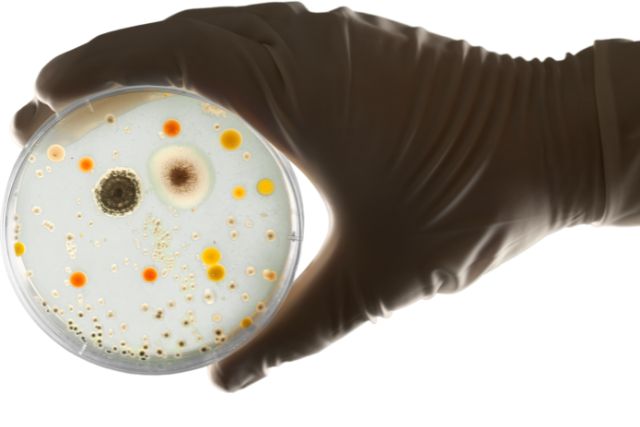What is the difference between viruses and bacteria? is one of the most frequently asked questions in the medical field. Did you also come here to learn about it? We will clear up all your doubts, whether you are studying for a test or treating a patient.
Viruses are acellular infectious agents, while bacteria are single-celled organisms. Viruses need a host cell to replicate, while bacteria are capable of independent reproduction. Here, we will cover all of these in detail. We will also share the common diseases caused by these two as well as their treatment options.
Going through this brief article will enable you to learn the difference between viruses and bacteria. If you carefully read and understand all the information shared here, you will not forget it for the rest of your life. Let’s quickly start with an introduction to both of these.
What are viruses?
Viruses are microscopic entities between living and non-living. They don’t have independent metabolism or reproduction. They consist of genetic material like DNA or RNA, enclosed in a protein coat. This genetic material takes over your host cells and replicates themselves. These can infect everything, including humans, animals, and plants, and cause several diseases.
What Is Bacteria?
Bacteria are single-celled microorganisms. These play different roles in ecosystems and are necessary for many biochemical processes. These are complete living organisms with a cellular structure. It includes a cell membrane, cytoplasm, and genetic material in the nucleoid. These can reproduce themselves with the help of binary fission. They have different metabolic capabilities. They can cause several diseases in humans and other organisms.
Structure and Characteristics
The structure and characteristics of viruses and bacteria are very different from each other due to their biological nature. Viruses have a simple structure with genetic material (DNA or RNA). They are enclosed in a protein coat called a capsid. Some viruses also have an outer lipid envelope, which is generated from host cell membranes.
Bacteria are complete cells and have a more complex structure. They have a cell wall, a cell membrane, cytoplasm, and other genetic material as well. Bacteria come in various shapes and sizes. It can be spherical cocci, rod-shaped bacilli, or spiral-shaped spirilla.
How do they affect your body?
Viruses and bacteria have different mechanisms, and they both affect your body differently. Hence, these cause different diseases and symptoms that require different treatments. Let’s take a look at some of the common diseases caused by both of these:
Common viral diseases
Here is a list of the 10 most common viral diseases:
- Influenza (Flu)
- COVID-19
- Common Cold
- HIV/AIDS
- Herpes Simplex Virus (HSV)
- Chickenpox and shingles
- Hepatitis B and C
- Dengue Fever
- Zika virus infection
- Ebola virus disease
Common bacterial infections
The common bacterial infections include:
- Streptococcal infections (strep throat, scarlet fever)
- Urinary Tract Infections (UTIs)
- Tuberculosis (TB)
- Salmonellosis (Salmonella infection)
- Staphylococcal infections (skin infections, MRSA)
- Pneumonia
- Gonorrhea
- Chlamydia Infection
- Lyme Disease
- Meningitis
Treatments for Viruses and Bacteria
Treatment options for viral and bacterial infections are also different due to the differences in their biological nature. These can also vary depending on how they have infected you and several other factors. Your doctor can suggest the most suitable treatment based on your diagnosis. Here are some of the most common treatments for both of these diseases:.
Viral Infections:
These are different medications for different viral infections. Generally, the most common ones are the following three:
- Antiviral Medications: There are different types of antiviral medications. Some of these are specifically for certain viruses, while others work for a wide range of viral infections.
- Vaccines: There are different vaccines for different viral infections. Getting those vaccines can also save you from them.
- Supportive Care: Most of the viruses are infections, and essential supportive care is very important to get rid of them.
Bacterial Infections:
There are different types of bacterial infections, which cause different diseases. Here are the general medications that are prescribed most of the time for these infections:.
- Antibiotics like penicillin, amoxicillin, ciprofloxacin, and azithromycin.
- Antiseptics and disinfectants
- Probiotics
- Surgery: Usually, the treatment for bacterial infections doesn’t include surgery, except in some cases. These are the cases in which the infection has spread to the extent that the medications are infectious.
Moreover, preventive measures like vaccination, good hygiene practices, and infection control measures are also essential. These will help in reducing the spread of both viral and bacterial diseases.
Final Words
Hopefully, now you understand how viruses are different from bacteria. Understanding these differences is essential for effectively treating any infection caused by them. You should consult your doctor for personalized advice on the treatment of any disease. Don’t try to self-medicate.
Knowing the unique characteristics of each pathogen is especially necessary if you are going to become a doctor. It helps doctors better treat these infectious diseases and prevent their spread within the community. You can contact us if you still have any confusion between these two.


